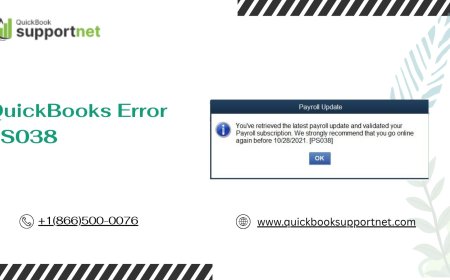How PMIS Tools Support PERT in Project Management
This article explores how PMIS tools support PERT in project management, enhance schedule accuracy, and help capital project owners make smarter decisions. We'll also highlight how implementation and consulting partners like OnIndus play a key role in integrating these technologies for maximum value

In today's complex construction and capital project environments, timely and accurate planning can make or break a project. One of the most reliable scheduling tools used for managing uncertainty in large-scale projects is the Program Evaluation and Review Technique (PERT). This method is especially beneficial in industries where timelines are not always fixed, such as infrastructure, utilities, healthcare, and government construction.
However, as project complexity grows, traditional or manual PERT charts alone are no longer sufficient. Teams need a centralized, dynamic, and scalable solution to manage time estimates, resources, dependencies, and stakeholder coordination. Thats where Project Management Information Systems (PMIS) become critical.
This article explores how PMIS tools support PERT in project management, enhance schedule accuracy, and help capital project owners make smarter decisions. We'll also highlight how implementation and consulting partners like OnIndus play a key role in integrating these technologies for maximum value.
Understanding PERT in Project Management
Before diving into how PMIS tools enhance PERT, it's important to understand what PERT is and why it's valuable.
PERT (Program Evaluation and Review Technique) is a project scheduling method that allows managers to estimate activity durations more accurately by considering uncertainty. Instead of relying on a single time estimate, PERT uses three:
-
Optimistic time (O) the best-case scenario
-
Most likely time (M) the expected duration
-
Pessimistic time (P) the worst-case scenario
Using the formula:
Expected Time (TE) = (O + 4M + P) / 6
This weighted average helps project managers account for uncertainty and variability in task durations. PERT is particularly useful in the early stages of project planning or when working on projects with many unknownslike new construction builds, infrastructure upgrades, or system overhauls in government programs.
Challenges with Using PERT Alone
While PERT provides a structured and mathematically sound approach to scheduling, managing it manually introduces several challenges:
-
Difficult to maintain in large-scale projects
-
Time-consuming updates when schedules shift
-
Limited visibility for stakeholders
-
Hard to integrate with other project components like budget or risk
To overcome these issues, modern project teams are integrating PERT with PMIS platforms, allowing them to build smarter, more flexible schedules.
How PMIS Tools Support PERT in Project Management
A Project Management Information System (PMIS) is a centralized digital platform used to manage the full lifecycle of a capital project. It integrates tools for scheduling, budgeting, document control, workflow automation, and reporting.
When PERT is used within a PMIS, the combination allows for a more agile, transparent, and data-driven approach to managing timelines. Heres how PMIS tools elevate the use of PERT in real-world project environments:
1. Dynamic Scheduling and Real-Time Updates
Manual PERT charts are static. When conditions changewhich they often do in capital projectsthe entire schedule may need to be recalculated. PMIS platforms solve this by providing real-time schedule updates.
Teams can build a network of PERT-based activity estimates within the system. As data is entered from the field (such as task completion, delays, or resource changes), the system recalculates timelines based on the PERT methodologyautomatically and instantly.
This dynamic capability keeps schedules current, minimizes risk, and helps managers make decisions based on up-to-date project conditions.
2. Integration with Project Controls
One of the major advantages of using a PMIS like e-Builder or Kahua is integration. With a single system managing scope, budget, documentation, and scheduling, PERT no longer lives in a silo.
For example:
-
A delay in procurement updates the timeline via PERT.
-
A change order affects both cost and schedule.
-
Schedule risk indicators are flagged based on pessimistic time estimates.
This integration gives stakeholders a comprehensive view of the entire projectnot just the schedulemaking it easier to predict problems and correct course early.
3. Consistent Workflow Automation
PMIS platforms automate the workflows tied to scheduling tasksapprovals, notifications, and updates. Teams can configure templates for recurring activities and automate the process of entering PERT time estimates during project planning.
Instead of relying on spreadsheets or manual follow-ups, PMIS tools ensure:
-
Time estimates are reviewed and approved within structured workflows
-
Data entry errors are minimized
-
Responsibility and accountability are tracked for each task
This consistency makes PERT more accessible to large project teams and improves data quality across the board.
4. Visualization Through Dashboards and Reports
PERT charts can quickly become difficult to interpret in large-scale projects. PMIS tools solve this by turning data into visual dashboards. These dashboards display:
-
Critical paths and task dependencies
-
Progress against optimistic, likely, and pessimistic timeframes
-
Forecasted project completion dates based on the PERT model
Project managers, executives, and external stakeholders can use these dashboards to understand project health without digging into complex diagrams or raw data.
5. Enhanced Risk Management
PERT is inherently a risk-aware toolit doesn't assume every task will be completed on time. When used within a PMIS, project teams can connect PERT estimates to risk logs, issues, and contingency plans.
For example:
-
A task with a wide range between optimistic and pessimistic times may trigger a risk flag
-
Contingency budgets can be tied to schedule risk based on PERT variance
-
Delays in critical activities automatically alert the team of potential downstream impacts
This proactive approach helps mitigate the risk of overruns and aligns schedule forecasting with overall project risk strategies.
The OnIndus Advantage: Making PERT Work Inside Your PMIS
While PMIS platforms are powerful, maximizing their potentialespecially when using advanced scheduling methods like PERTrequires proper configuration, process alignment, and user adoption. Thats where OnIndus brings unmatched value.
OnIndus is a specialized consulting firm that helps public and private organizations implement and optimize PMIS tools like e-Builder, Kahua, and others. Our team works with capital project owners across government, infrastructure, education, and healthcare to streamline their digital project management systems.
OnIndus helps you:
-
Align your PERT scheduling process with PMIS workflows
-
Configure scheduling modules and integrate risk data
-
Develop user-friendly templates for time estimation
-
Train staff to interpret and manage PERT-based dashboards
-
Maintain data accuracy through continuous system support
By bridging the gap between process and technology, OnIndus ensures that your organization gets the most out of both PERT and your PMIS investment.
Conclusion: A Smarter Way to Manage Uncertainty
PERT in project management is a proven technique for improving time estimation and planning under uncertainty. But in todays fast-paced, data-rich project environments, using PERT in isolation is no longer effective.
By integrating PERT into a robust PMIS platform, organizations gain:
-
Real-time schedule visibility
-
Improved forecasting and risk mitigation
-
Stronger accountability and workflow control
-
Enhanced communication with all stakeholders
With expert guidance from OnIndus, capital project owners can combine the strengths of PERT and PMIS to build project schedules that are not only accuratebut actionable and adaptive.
In today's complex construction and capital project environments, timely and accurate planning can make or break a project. One of the most reliable scheduling tools used for managing uncertainty in large-scale projects is the Program Evaluation and Review Technique (PERT). This method is especially beneficial in industries where timelines are not always fixed, such as infrastructure, utilities, healthcare, and government construction.
However, as project complexity grows, traditional or manual PERT charts alone are no longer sufficient. Teams need a centralized, dynamic, and scalable solution to manage time estimates, resources, dependencies, and stakeholder coordination. Thats where Project Management Information Systems (PMIS) become critical.
This article explores how PMIS tools support PERT in project management, enhance schedule accuracy, and help capital project owners make smarter decisions. We'll also highlight how implementation and consulting partners like OnIndus play a key role in integrating these technologies for maximum value.
Understanding PERT in Project Management
Before diving into how PMIS tools enhance PERT, it's important to understand what PERT is and why it's valuable.
PERT (Program Evaluation and Review Technique) is a project scheduling method that allows managers to estimate activity durations more accurately by considering uncertainty. Instead of relying on a single time estimate, PERT uses three:
-
Optimistic time (O) the best-case scenario
-
Most likely time (M) the expected duration
-
Pessimistic time (P) the worst-case scenario
Using the formula:
Expected Time (TE) = (O + 4M + P) / 6
This weighted average helps project managers account for uncertainty and variability in task durations. PERT is particularly useful in the early stages of project planning or when working on projects with many unknownslike new construction builds, infrastructure upgrades, or system overhauls in government programs.
Challenges with Using PERT Alone
While PERT provides a structured and mathematically sound approach to scheduling, managing it manually introduces several challenges:
-
Difficult to maintain in large-scale projects
-
Time-consuming updates when schedules shift
-
Limited visibility for stakeholders
-
Hard to integrate with other project components like budget or risk
To overcome these issues, modern project teams are integrating PERT with PMIS platforms, allowing them to build smarter, more flexible schedules.
How PMIS Tools Support PERT in Project Management
A Project Management Information System (PMIS) is a centralized digital platform used to manage the full lifecycle of a capital project. It integrates tools for scheduling, budgeting, document control, workflow automation, and reporting.
When PERT is used within a PMIS, the combination allows for a more agile, transparent, and data-driven approach to managing timelines. Heres how PMIS tools elevate the use of PERT in real-world project environments:
1. Dynamic Scheduling and Real-Time Updates
Manual PERT charts are static. When conditions changewhich they often do in capital projectsthe entire schedule may need to be recalculated. PMIS platforms solve this by providing real-time schedule updates.
Teams can build a network of PERT-based activity estimates within the system. As data is entered from the field (such as task completion, delays, or resource changes), the system recalculates timelines based on the PERT methodologyautomatically and instantly.
This dynamic capability keeps schedules current, minimizes risk, and helps managers make decisions based on up-to-date project conditions.
2. Integration with Project Controls
One of the major advantages of using a PMIS like e-Builder or Kahua is integration. With a single system managing scope, budget, documentation, and scheduling, PERT no longer lives in a silo.
For example:
-
A delay in procurement updates the timeline via PERT.
-
A change order affects both cost and schedule.
-
Schedule risk indicators are flagged based on pessimistic time estimates.
This integration gives stakeholders a comprehensive view of the entire projectnot just the schedulemaking it easier to predict problems and correct course early.
3. Consistent Workflow Automation
PMIS platforms automate the workflows tied to scheduling tasksapprovals, notifications, and updates. Teams can configure templates for recurring activities and automate the process of entering PERT time estimates during project planning.
Instead of relying on spreadsheets or manual follow-ups, PMIS tools ensure:
-
Time estimates are reviewed and approved within structured workflows
-
Data entry errors are minimized
-
Responsibility and accountability are tracked for each task
This consistency makes PERT more accessible to large project teams and improves data quality across the board.
4. Visualization Through Dashboards and Reports
PERT charts can quickly become difficult to interpret in large-scale projects. PMIS tools solve this by turning data into visual dashboards. These dashboards display:
-
Critical paths and task dependencies
-
Progress against optimistic, likely, and pessimistic timeframes
-
Forecasted project completion dates based on the PERT model
Project managers, executives, and external stakeholders can use these dashboards to understand project health without digging into complex diagrams or raw data.
5. Enhanced Risk Management
PERT is inherently a risk-aware toolit doesn't assume every task will be completed on time. When used within a PMIS, project teams can connect PERT estimates to risk logs, issues, and contingency plans.
For example:
-
A task with a wide range between optimistic and pessimistic times may trigger a risk flag
-
Contingency budgets can be tied to schedule risk based on PERT variance
-
Delays in critical activities automatically alert the team of potential downstream impacts
This proactive approach helps mitigate the risk of overruns and aligns schedule forecasting with overall project risk strategies.
The OnIndus Advantage: Making PERT Work Inside Your PMIS
While PMIS platforms are powerful, maximizing their potentialespecially when using advanced scheduling methods like PERTrequires proper configuration, process alignment, and user adoption. Thats where OnIndus brings unmatched value.
OnIndus is a specialized consulting firm that helps public and private organizations implement and optimize PMIS tools like e-Builder, Kahua, and others. Our team works with capital project owners across government, infrastructure, education, and healthcare to streamline their digital project management systems.
OnIndus helps you:
-
Align your PERT scheduling process with PMIS workflows
-
Configure scheduling modules and integrate risk data
-
Develop user-friendly templates for time estimation
-
Train staff to interpret and manage PERT-based dashboards
-
Maintain data accuracy through continuous system support
By bridging the gap between process and technology, OnIndus ensures that your organization gets the most out of both PERT and your PMIS investment.
Conclusion: A Smarter Way to Manage Uncertainty
PERT in project management is a proven technique for improving time estimation and planning under uncertainty. But in todays fast-paced, data-rich project environments, using PERT in isolation is no longer effective.
By integrating PERT into a robust PMIS platform, organizations gain:
-
Real-time schedule visibility
-
Improved forecasting and risk mitigation
-
Stronger accountability and workflow control
-
Enhanced communication with all stakeholders
With expert guidance from OnIndus, capital project owners can combine the strengths of PERT and PMIS to build project schedules that are not only accuratebut actionable and adaptive.






























